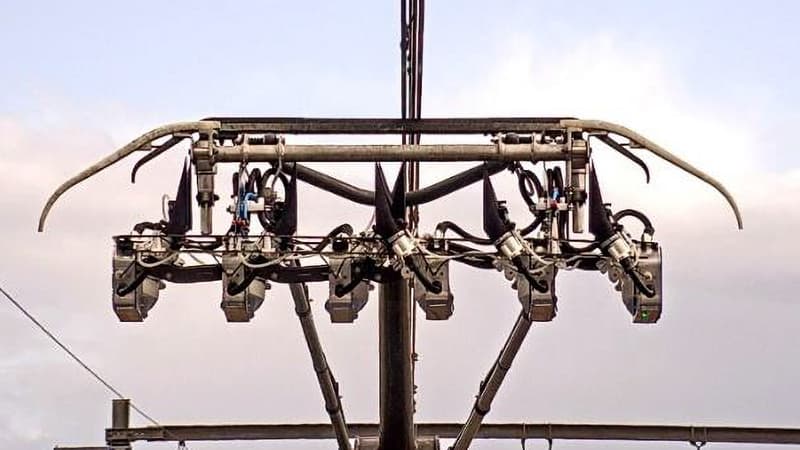As we know, the state of the SNCF network is worrying. If the group has obtained that an additional objective of 1.5 billion euros per year assigned to the network in 2028 is registered in the law (it is still necessary to define the sources of financing), it has been looking for years to reduce colossal costs to monitor its network. SNCF Reseau, the entity in charge of the maintenance of the network, is based on innovation to implement solutions that allow them to be effective in this faster surveillance, while saving.
This network has two main fragility points: the catenaries, these suspended cables that supply electricity through a pantograph, most trains, at speeds that sometimes exceed 300 km/h, and the tracks (rails, mischief, ballast) in themselves. The challenge is immense to monitor more than 33,000 kilometers of catenaries, some of which date from the 1950s and are sensitive to global warming. Obviously, when one of these catenaries is broken or started, it cannot circulate more train (except the following TGV M, which will have a rescue battery).
This surveillance has been carried out for a long time by 17 specialized devices “equipped with measurement systems that combine techniques such as profiles and navel” that circulate very slowly, between 5 and 15 km/h, and cannot be inserted into commercial traffic, which led to large logistics restrictions, but also failures that can reach five years between two passages in the same line “, explains the work of laboratories Labadie
6,000 images per second
The company has sought innovative and more efficient solutions. In vain. Then he decided to develop his own technology to evaluate the abrasion of cables at much higher speeds. This is the Camecat project, started in 2015 and that has since reached pre -production since last February. The solution is based on the use of lasers. Installed in the rolling stock, “it is based on the profile by combining two lasers capable of evaluating the thickness of a cable to the nearest half a millimeter, producing up to 6,000 images per second, at speeds of up to 120 km/h”.
“This new device brings together 150 components, of 40 suppliers, and has 20 kilograms of equipment on the head of a modified pantograph. We also work on the computer network, to recover these bytes Giga data on computer bays, in trains, as well as their transfer to the SNCF cloud, for the teams responsible for analyzing them,” says the manager.
The gain compared to the previous approach is obvious since the measures can be made at 120 km/h. Enough to cover high -speed lines on one night. The planned arrival of a second 2027 device should allow us to measure every year, the vast majority of the 33,500 kilometers of catenaries on the network welcome Chantal Lutar. Above all, the system allows you to identify very precisely the portions that will be repaired. All in a context of the flight of copper courses, the metal at the origin of the catenaries, which is the object of many flights to the SNCF.
Autonomous railroad machine
Along the way, the verification of high -speed lines is historically guaranteed by empty TGVs that carry out this early mission in the morning before the circulation of the first commercial trains.
The manager must soon replace these vacuum steps with the LGV Mars system for “autonomous safety recognition” mobiles. As shown in the video below, Mars is an autonomous vehicle that resembles a train, assumes a series of sensors (cameras, radar, lidar, etc.) and remotely controlled by an operator.
“These mobile phones will carry out a fine and instantaneous analysis of the National Railway Network, thanks to a series of plaque sensors. Fowered by new generation batteries, the entire network will travel and instantly transmit the necessary information for supervision equipment,” explains SNCF Réseau.
More TGV available for travelers
The manager highlights the benefits of this solution: “An energy consumption divided by 20 and a ‘green’ design of the mobile with a low carbon solution, the integration of innovative technologies (which) could open the way to other areas of rail operations and an increase in the level of railway security and the costs of carrying out the recognition divided by three.”
In addition, this would free drivers and equipment for commercial service, while SNCF travelers suffer from a TGV park under demand size, while the new M TGV is always expected. The trains that the surveillance of the roads performs approximately 20 circulations per day. The project has just begun its development. The manufacture of the prototype is scheduled for 2027, the tests and tests for 2028-2029 and the validation in mid-2029 for an operation in 2030.
Source: BFM TV


